Sovereign states
A


- Alipura – Alipura State


- Andorra – Principality of Andorra
- Angul (to 1803)

- Annam – Empire of Annam
- Anziku – Anziku Kingdom


- Athgarh (to 1803)
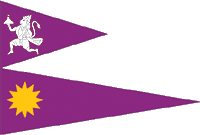
Ajaigarh State was one of the princely states of India during the period of the British Raj. The state was founded in 1785 and its capital was located in Ajaigarh, Madhya Pradesh.
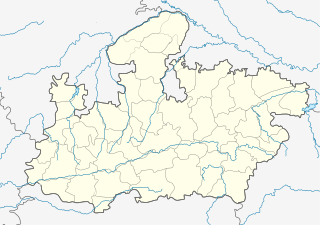
Alirajpur is a town and a municipality in Alirajpur district in the state of Madhya Pradesh, India.

Alwar located 150 km south of Delhi and 150 km north of Jaipur, is a city in India's National Capital Region and the administrative headquarters of Alwar District in the state of Rajasthan. Alwar is a hub of tourism with several forts, lakes, heritage havelis and nature reserves, including the Bhangarh Fort, the Sariska Tiger Reserve and Siliserh lake.
B
- Baguirmi – Kingdom of Baguirmi
- Bambara – Bambara Empire
- Baol – Kingdom of Baol

- Bhutan – Kingdom of Bhutan








The Bamana Empire was a large West African state based at Ségou, now in Mali. This state was established after the fall of the Mali Empire and the Keita dynasty, as a smaller Bambara Empire founded by other Bambara families related to the Keita clan. It was ruled by the Kulubali or Coulibaly dynasty established c. 1640 by Kaladian Coulibaly also known as Fa Sine or Biton-si-u. The empire existed as a centralized state from 1712 until the 1862 invasion of Toucouleur conqueror, El Hadj Umar Tall.
The Kingdom of Baol or Bawol in central Senegal was one of the kingdoms that arose from the split-up of the Empire of Jolof (Diolof) in 1555. The ruler reigned from a capital in Diourbel.

Bhutan, officially the Kingdom of Bhutan, is a landlocked country in South Asia. Located in the Eastern Himalayas, it is bordered by the Tibetan Autonomous Region of China in the north, the Sikkim state of India and the Chumbi Valley of Tibet in the west, the Arunachal Pradesh state of India in the east, and the states of Assam and West Bengal in the south. Bhutan is geopolitically in South Asia and is the region's second least populous nation after the Maldives. Thimphu is its capital and largest city, while Phuntsholing is its financial center.
C

- Cayor – Kingdom of Cayor

- China – Great Qing Empire


The Dark ages of Cambodia, also called the Middle Period, refers to the historical era from the early 15th century to 1863, the beginning of the French Protectorate of Cambodia. As reliable sources are very rare, a defensible and conclusive explanation that relates to concrete events that manifest the decline of the Khmer Empire, recognised unanimously by the scientific community, has so far not been produced. However, most modern historians have approached a consensus in which several distinct and gradual changes of religious, dynastic, administrative and military nature, environmental problems and ecological imbalance coincided with shifts of power in Indochina and must all be taken into account to make an interpretation. In recent years scholars' focus has shifted increasingly towards human–environment interactions and the ecological consequences, including natural disasters, such as flooding and droughts.

Cayor was the largest and most powerful kingdom (1549–1879) that split off from the Jolof Empire in what is now Senegal. Cayor was located in northern and central Senegal, southeast of Walo, west of the kingdom of Jolof, and north of Baol and the Kingdom of Sine.
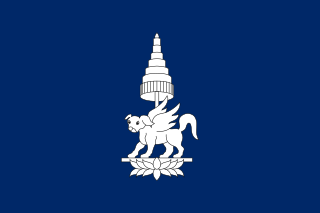
The Kingdom of Champasak or Bassac, (1713–1946) was a Lao kingdom under Nokasad, a grandson of King Sourigna Vongsa, the last king of Lan Xang; and son-in-law of the Cambodian King Chey Chettha IV. Bassac and the neighboring principalities of Attapeu and Stung Treng, emerged as power centers under what was later to be described as the Mandala Southeast Asian political model.
D
- Dahomey – Kingdom of Dahomey



The Kingdom of Dahomey was an African kingdom that existed from about 1600 until 1894, when the last king, Béhanzin, was defeated by the French, and the country was annexed into the French colonial empire. Dahomey developed on the Abomey Plateau amongst the Fon people in the early 17th century and became a regional power in the 18th century by conquering key cities on the Atlantic coast.

The Durrani Empire, also called the Sadozai Kingdom, and Afghan Empire, was founded and built by Ahmad Shah Durrani. At its maximum extent, the empire ruled over what are now the modern-day countries of Afghanistan, Pakistan, as well as some parts of northeastern Iran, eastern Turkmenistan, and northwestern India including the Kashmir region.
E

F
- Fiji – Tui Viti

- Futa Jallon – Imamate of Futa Jallon
- Futa Toro – Imamate of Futa Toro

Fiji, officially the Republic of Fiji, is an island country in Melanesia, part of Oceania in the South Pacific Ocean about 1,100 nautical miles northeast of New Zealand's North Island. Its closest neighbours are Vanuatu to the west, New Caledonia to the southwest, New Zealand's Kermadec Islands to the southeast, Tonga to the east, the Samoas and France's Wallis and Futuna to the northeast, and Tuvalu to the north. Fiji consists of an archipelago of more than 330 islands—of which 110 are permanently inhabited—and more than 500 islets, amounting to a total land area of about 18,300 square kilometres (7,100 sq mi). The most outlying island is Ono-i-Lau. The two major islands, Viti Levu and Vanua Levu, account for 87% of the total population of 898,760. The capital, Suva, on Viti Levu, serves as the country's principal cruise-ship port. About three-quarters of Fijians live on Viti Levu's coasts, either in Suva or in smaller urban centres such as Nadi—where tourism is the major local industry—or Lautoka, where the sugar-cane industry is paramount. Due to its terrain, the interior of Viti Levu is sparsely inhabited.
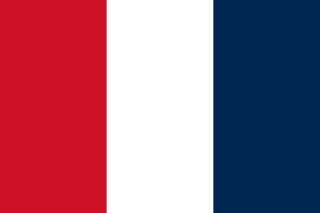
In the history of France, the First Republic, officially the French Republic, was founded on 22 September 1792 during the French Revolution. The First Republic lasted until the declaration of the First Empire in 1804 under Napoleon, although the form of the government changed several times. This period was characterized by the fall of the monarchy, the establishment of the National Convention and the Reign of Terror, the Thermidorian Reaction and the founding of the Directory, and, finally, the creation of the Consulate and Napoleon's rise to power.
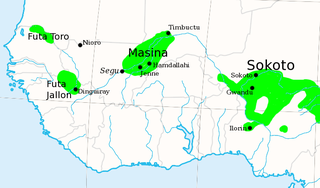
The Imamate of Futa Jallon or Jalon was a West African theocratic state based in the Fouta Djallon highlands of modern Guinea. The state was founded around 1727 by a Fulani jihad and became part of the French Third Republic's colonial empire in 1896.
G
The Kingdom of Garo, also known as Bosha after its ruling dynasty, was an ancient kingdom in the Horn of Africa. Established by the mecha oromo, it was situated on the periphery of the Gibe region. The garo oromo was named from the word (gaara) means "the upper site", the place where they were living at that time.

The Kingdom of Gomma was one of the kingdoms in the Gibe region of Ethiopia that emerged in the 18th century. It was based in Agaro.

The Kingdom of Gumma was one of the kingdoms in the Gibe region of Ethiopia that emerged in the 18th century. Its eastern border was formed by the bend of the Didessa River, which separated it from Limmu-Ennarea to the northeast, and the kingdoms of Gomma and Gera to the south. Beyond its northern border were various Macha Oromo groups, and to the west Sidamo groups. Its territory corresponds approximately with the modern woredas of Gechi and Didessa.
H






























J
K
L
- Limmu-Ennarea – Kingdom of Limmu-Ennarea

- Luba – Luba Empire
- Lunda – Lunda Empire
M
N

O

- Ouaddai – Ouaddai Empire
- Oyo – Oyo Empire
P
R
- Rapa Nui – Kingdom of Rapa Nui

- Rwanda – Kingdom of Rwanda

S
- Samoa – Kingdom of Samoa

- Sardinia – Kingdom of Sardinia




- Sikkim – Chogyalate of Sikkim



T



U

